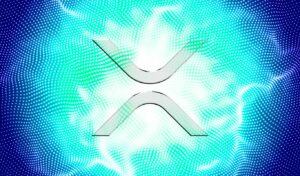
Breakthrough technologies are developed with a promise of value. The promise is that we can create something new that undeniably improves some aspect of human cooperation.
Ever since Satoshi Nakamoto published his Bitcoin whitepaper, crypto advocates have been touting the enormous and revolutionary value the technology holds. Web3, which can be used for everything from supply chains to identity to finance, has been touted as a panacea for the world’s systemic problems. If you make it on-chain, you can solve everything.
google and libra
I first learned about blockchain when I was in charge of an open source project called Kubeflow at Google. It was clear to me as a developer that open protocols were superior to the closed systems that dominated the web.
But the use cases that drove Web3’s early boom cycle were often experimental and risky. Google’s motto was “Don’t be evil,” but early Web3 slogans seemed to be “Don’t call the faint-hearted.”
In 2018, I joined Facebook at the time to help design and develop the ambitious and controversial stablecoin project Libra. Despite its critics, Facebook was undoubtedly a breakthrough technology. It has unlocked enormous value in the form of communication and connectivity that transforms human cooperation internationally. Facebook’s app was intuitive, convenient, and accessible.
With the launch of Libra, Facebook wanted Web3 to have the same user experience (UX) as the Facebook app (albeit abandoning Web3’s fundamental openness).
If Libra had been successful, it would have given billions of people access to an ecosystem of stablecoins and financial products, increasing the number of daily active blockchain users by orders of magnitude overnight.
But it didn’t. And it was better for the world.
Lessons learned in Web2
I learned a lot as an engineer while working for one of the Web2 giants. I personally experienced the limits of closed-source technology and the inequalities it creates. That’s why developing with Web3 is exciting.
The benefits of decentralization are appealing to developers who love to be conceptual, but difficult to explain to many potential users. It’s difficult to explain to many people how Web3 solves a problem that many people don’t understand in the first place. Especially if the existing solution seems to work fine.
The complexity of developing applications on decentralized technology has created a gap between developers and users that will only widen.
To create meaningful impact in Web3, we need to focus on immediate value that users can feel, rather than focusing on technical processes. Instead of striving for technical perfection, we should prioritize developing user-friendly, accessible applications that solve real-world problems and drive Web3 mainstream adoption.
Ultimately, value is determined by the people using the product, not by how sophisticated the technology is inside.
What is Web3 good for?
About 15 years have passed since the decentralization revolution began. A solid technical foundation is already in place to support a myriad of exciting use cases. A new industry is being built and born on top of the Web3 model, which has undeniably created value and gained mainstream recognition. However, even if it is recognized, it is not widespread in the mainstream.
Web3 is a transformative technology, but its breakthrough will require a shift in the way we think about value from an ideological future to one centered on immediate value that users can enjoy. We need to take a more user-centric approach, make Web3’s value more relevant to more people, and offer compelling solutions to the inefficiencies people can perceive.
If there’s one thing developers like better than well-defined but poorly understood phrases, it’s a well-organized list. Here are my engineering principles for balancing technology and customer value.
put customers first : Our ultimate goal is to deliver value to our customers. Every decision we make, every feature we develop, every process we follow should be guided by our understanding of our customers’ needs.
Optimize for customer value, not just technical sophistication : The most technologically advanced system is not always the best option for the customer. Weigh the technical performance and the time to value delivery, and choose the one that can deliver the maximum value to the customer in the shortest time.
Focus on impact, not just process : For our customers, it’s not the process that got us here that matters, but the results we bring. Prioritize meaningful results over choosing a rigid process.
move nimbly and quickly : We must quickly and repeatedly test multiple product ideas and deliver the results to our customers. Must be extremely agile and able to change course in response to market/customer feedback.
Don’t aim for perfection, make it perfect Aiming for excellence is important, but it’s equally important to recognize that there’s a limit to what you can do in the time you’re given.
Collective ownership and individual accountability : All members of the team are responsible for the code and have the authority to make changes. But at the same time each member is individually responsible for the quality and maintainability of his own work.
The hurdles are high. However, this is necessary for a breakthrough to spread to the masses.
Mr. Ankush Agarwal : Co-Founder and Chief Architect of Protocol Co:Create for NFT Ecosystem.
|Translation and editing: Akiko Yamaguchi, Takayuki Masuda |Image: Shutterstock |Original: A Technologist’s Approach to Explaining What Crypto Fixes
window.fbAsyncInit = function() {
FB.init({
appId : '592401157873165',
cookie : true,
xfbml : true,
version : 'v3.2'
});
FB.AppEvents.logPageView();
};
(function(d, s, id){
var js, fjs = d.getElementsByTagName(s)[0];
if (d.getElementById(id)) {return;}
js = d.createElement(s); js.id = id;
js.src = "https://connect.facebook.net/en_US/sdk.js";
fjs.parentNode.insertBefore(js, fjs);
}(document, 'script', 'facebook-jssdk'));
The post How to proceed with Web3: Lessons learned by developers who experienced Google and Libra[Column]| coindesk JAPAN | Coindesk Japan appeared first on Our Bitcoin News .
- SEO Powered Content & PR Distribution. Get Amplified Today.
- Platoblockchain. Web3 Metaverse Intelligence. Knowledge Amplified. Access Here.
- Minting the Future w Adryenn Ashley. Access Here.
- Source: https://bitrss.com/news/304717/how-to-proceed-with-web3-lessons-learned-by-developers-who-experienced-google-and-libra-column-coindesk-japan-coindesk-japan
- :has
- :is
- :not
- 15 years
- 2018
- a
- Able
- About
- About Blockchain
- access
- accessible
- accountability
- active
- Adoption
- advanced
- advocates
- agile
- Aiming
- All
- already
- always
- ambitious
- an
- and
- app
- appealing
- appeared
- applications
- approach
- ARE
- AS
- aspect
- At
- authority
- BE
- been
- began
- being
- benefits
- BEST
- Better
- between
- billions
- Bitcoin
- Bitcoin News
- Bitcoin Whitepaper
- blockchain
- boom
- born
- breakthrough
- bring
- built
- but
- by
- call
- called
- CAN
- cases
- centered
- chains
- change
- Changes
- charge
- chief
- Choose
- choosing
- clear
- closed
- CO
- Co-founder
- code
- Coindesk
- Column
- Communication
- compelling
- complexity
- conceptual
- Connectivity
- controversial
- Convenient
- cooperation
- course
- create
- created
- creates
- Critics
- crypto
- customer
- Customers
- cycle
- daily
- Decentralization
- decentralized
- decision
- deliver
- delivery
- Design
- Despite
- determined
- develop
- developed
- Developer
- developers
- developing
- difficult
- do
- document
- Dont
- drive
- each
- Early
- ecosystem
- editing
- engineer
- Engineering
- enjoy
- enormous
- equally
- especially
- Even
- Every
- everything
- Excellence
- exciting
- existing
- experience
- experienced
- Explain
- explaining
- extremely
- Feature
- feedback
- finance
- financial
- financial products
- fine
- First
- Focus
- focusing
- follow
- For
- form
- Foundation
- from
- fundamental
- future
- gap
- given
- goal
- good
- Google’s
- Have
- help
- here
- High
- holds
- How
- How To
- However
- HTTPS
- human
- Hurdles
- i
- ID
- ideas
- Identity
- immediate
- Impact
- important
- improves
- in
- increasing
- individual
- Individually
- industry
- inequalities
- instead
- internationally
- intuitive
- IT
- ITS
- Japan
- joined
- jpg
- just
- Kubeflow
- launch
- learned
- Lessons
- Lessons Learned
- Libra
- like
- LIMIT
- limits
- List
- Lot
- love
- Mainstream
- mainstream adoption
- make
- many
- many people
- masses
- Matters
- maximum
- meaningful
- member
- Members
- model
- more
- most
- Motto
- multiple
- nakamoto
- necessary
- Need
- needs
- New
- news
- NFT
- number
- of
- offer
- on
- On-Chain
- ONE
- only
- open
- open source
- Openness
- Option
- orders
- our
- over
- overnight
- own
- ownership
- panacea
- passed
- People
- perfect
- perfection
- performance
- Personally
- phrases
- Place
- plato
- Plato Data Intelligence
- PlatoData
- Post
- potential
- principles
- Prioritize
- Problem
- problems
- process
- processes
- Product
- Products
- project
- promise
- protocol
- protocols
- published
- quality
- quickly
- rather
- real world
- recognition
- recognize
- recognized
- relevant
- REPEATEDLY
- require
- response
- responsible
- Results
- Revolution
- revolutionary
- rigid
- Risky
- s
- same
- Satoshi
- Satoshi Nakamoto
- seemed
- seems
- shift
- should
- shutterstock
- since
- solid
- solution
- Solutions
- SOLVE
- Solves
- some
- something
- sophisticated
- Source
- spread
- stablecoin
- Stablecoins
- successful
- superior
- supply
- Supply chains
- support
- system
- systemic
- Systems
- Take
- team
- Technical
- Technologies
- Technology
- test
- than
- that
- The
- the world
- thing
- this
- time
- to
- top
- touted
- transformative
- true
- ultimate
- understand
- understanding
- understood
- undoubtedly
- us
- use
- used
- User
- User Experience
- user-centric
- user-friendly
- users
- using
- ux
- value
- wanted
- was
- Way..
- we
- web
- Web2
- Web3
- Web3’s
- weigh
- well-defined
- were
- What
- which
- while
- Whitepaper
- WHO
- why
- widespread
- will
- with
- Work
- working
- world
- world’s
- would
- years
- you
- zephyrnet












